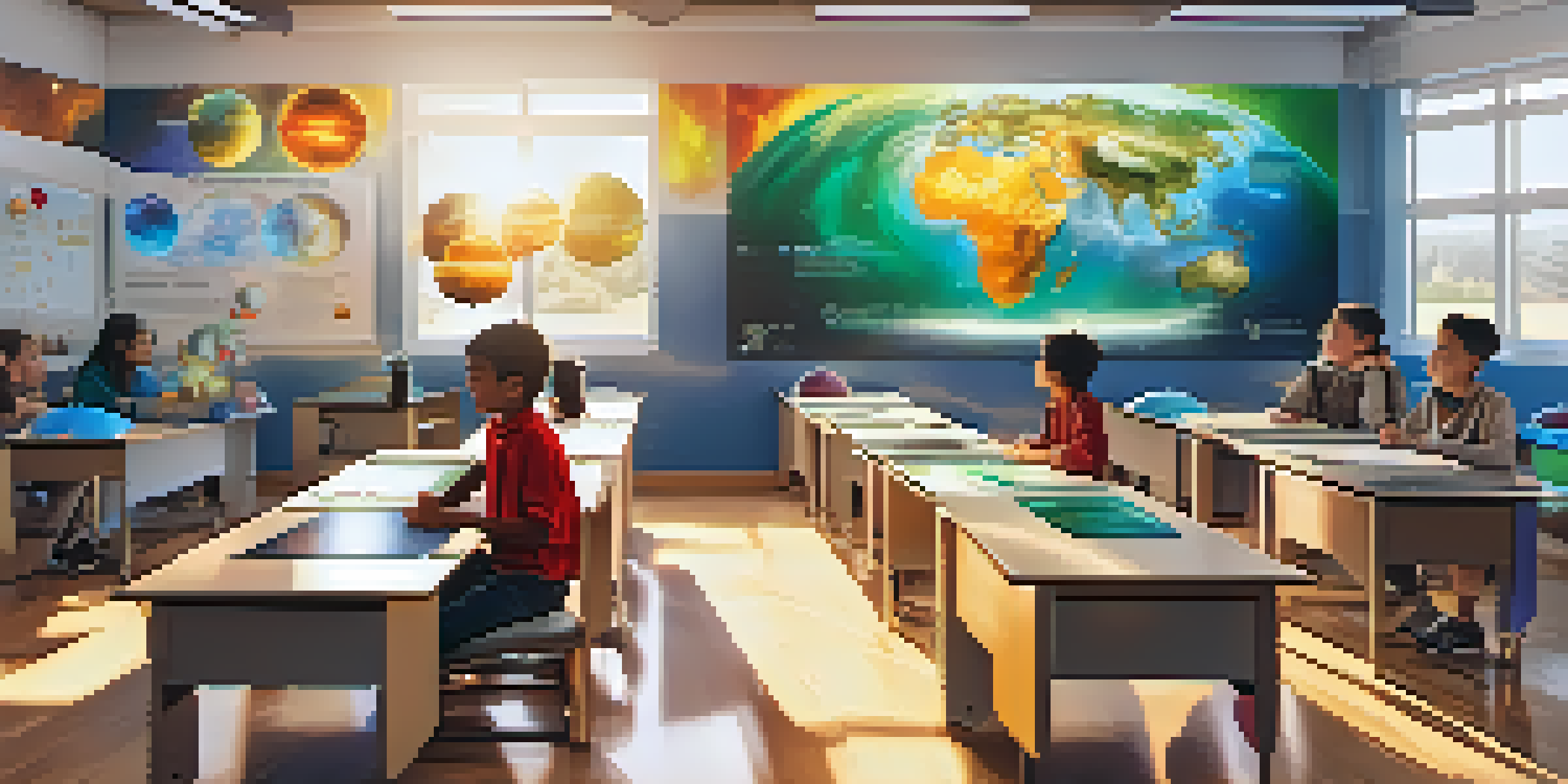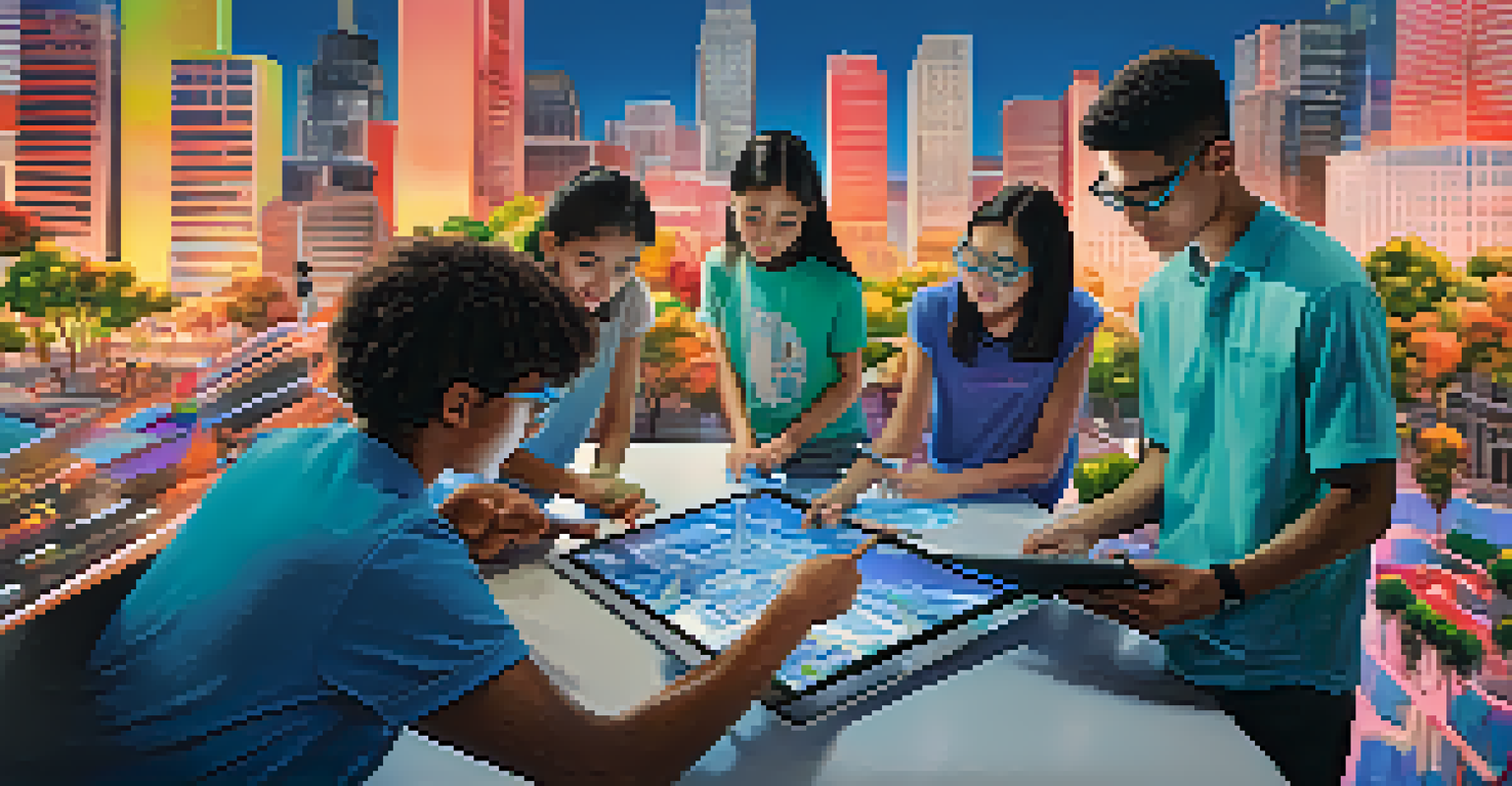AR for Remote Learning: Bridging the Gap

Understanding Augmented Reality in Education
Augmented Reality (AR) is a technology that overlays digital information onto the real world. Imagine looking at a textbook and seeing a 3D model of the solar system pop out, making the content come alive. This immersive experience is reshaping how students engage with their learning materials, especially in a remote setting.
Augmented reality can give students a real-world context for learning, enhancing engagement and understanding.
In the context of education, AR can transform traditional learning methods by providing interactive experiences that foster deeper understanding. For instance, instead of just reading about historical events, students could explore a virtual reconstruction of ancient civilizations. This hands-on approach makes learning not just informative but also memorable.
As remote learning becomes more prevalent, integrating AR can help bridge the gap between physical classrooms and virtual interactions. It allows for a more dynamic and engaging educational experience, making lessons feel less like a chore and more like an adventure.
Enhancing Engagement Through Interactive Learning
One of the biggest challenges of remote learning is keeping students engaged. With AR, lessons can become interactive experiences that capture students' attention and stimulate their curiosity. Imagine students participating in a virtual science lab where they can conduct experiments without the need for physical materials.

Engagement is further boosted when students can manipulate digital objects within their environment. For example, they could use AR to dissect a virtual frog, gaining hands-on experience without the logistical challenges of a real lab. This interactive approach not only retains interest but also encourages active participation.
AR Enhances Learning Engagement
Augmented Reality transforms traditional education by creating interactive experiences that captivate students' attention.
Moreover, AR can cater to various learning styles, allowing visual, auditory, and kinesthetic learners to thrive. Students can visualize concepts, hear explanations, and physically manipulate objects, making learning more inclusive and effective.
Fostering Collaboration in Remote Learning Environments
Collaboration is a crucial aspect of learning, and AR can enhance teamwork even in remote settings. Imagine students from different locations working together on a shared AR project, where they can see and interact with the same virtual objects in real time. This kind of collaborative experience can mimic the dynamics of a traditional classroom.
Technology is best when it brings people together. AR in education fosters collaboration across distances.
By using AR tools, students can brainstorm, share ideas, and problem-solve together, all while feeling connected despite the distance. For instance, a group project could involve designing a city in AR, where each student contributes their unique ideas and views.
Such collaborative projects not only teach essential skills like communication and teamwork but also help build a sense of community among students. The social aspect of learning shouldn't be overlooked, and AR helps maintain those vital connections.
Overcoming Barriers to Access in Education
Despite the benefits of AR, there are still barriers to access, particularly in remote learning. Not all students have access to the latest devices or reliable internet, which can hinder their learning experience. However, innovative AR solutions are emerging to address these challenges.
For instance, some platforms are developing AR experiences that can be accessed on low-cost devices or even through smartphones. This democratization of technology can make immersive learning experiences available to a broader range of students, regardless of their socioeconomic status.
Collaboration in Remote Learning
AR fosters teamwork among students in remote settings, allowing them to engage in shared projects and build connections.
Additionally, AR can be designed to work offline, allowing students in areas with limited internet connectivity to engage with learning materials. By overcoming these barriers, AR has the potential to create a more equitable educational landscape.
Real-World Applications of AR in Remote Learning
The application of AR in remote learning extends beyond theoretical concepts; it's being used in various subjects with great success. For instance, in language learning, AR can bring vocabulary to life by overlaying translations and context onto real-world objects. This immersive approach helps students grasp language nuances more effectively.
In the field of mathematics, AR can visualize complex equations and geometric shapes, allowing students to interact with abstract concepts. Imagine trying to solve a 3D puzzle that teaches spatial reasoning, making math both fun and engaging.
These real-world applications demonstrate that AR is not just a novelty; it’s a powerful tool that can be leveraged to enhance learning outcomes across disciplines. As educators increasingly adopt AR, its potential to revolutionize remote learning becomes more apparent.
The Role of Educators in Implementing AR
While AR offers exciting possibilities, its successful implementation in remote learning relies heavily on educators. Teachers need to be trained not only in how to use AR tools but also in how to integrate them effectively into their curricula. This transition from traditional teaching methods to AR-enhanced lessons requires support and resources.
Educators play a crucial role in selecting the right AR applications that align with their learning objectives. They can design lessons that leverage AR to reinforce concepts, making learning more engaging and relevant for students. This thoughtful integration can lead to improved educational outcomes.
Overcoming Access Barriers
Innovative AR solutions are emerging to make immersive learning experiences accessible to students regardless of their socioeconomic status.
Moreover, teachers can encourage students to take ownership of their learning by allowing them to create their own AR content. This empowers students to explore their interests and fosters creativity, making the learning experience more personalized and impactful.
The Future of AR in Remote Learning
Looking ahead, the future of AR in remote learning is promising. As technology continues to evolve, we can expect more sophisticated AR tools that offer even richer and more immersive experiences. This could lead to a new standard in education, where AR is not just an add-on but an integral part of the learning ecosystem.
Additionally, as more educational institutions recognize the benefits of AR, we may see increased investment in research and development. This could accelerate the creation of innovative AR solutions tailored specifically for remote learning environments.

Ultimately, the goal is to create an inclusive and engaging educational experience for all students. By continuing to explore and implement AR in remote learning, we can bridge the gap between traditional and digital education, ensuring that every learner has access to the tools they need to succeed.